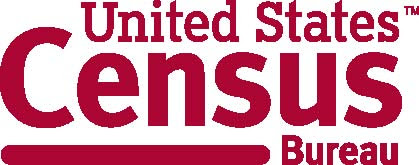Contribute
| Census Bureau Statistics Explore Voting Patterns Of Young Adults |
Press Release
04/24/2014
Voting rates among young adults fell to 38.0 percent in 2012 from 44.3 percent in 2008 following increases in two consecutive presidential elections (2008 and 2004), according to a new U.S. Census Bureau report on age and voting patterns released recently. These statistics come from Young Adult Voting: An Analysis of Presidential Elections, 1964-2012, which uses data collected by the Current Population Survey. The report provides a detailed 50-year historical portrait of voters with a specific focus on young adults. In every U.S. presidential election from 1964 on, 18- to 24-year-olds voted at lower rates than all other age groups. In contrast, Americans 65 and older have voted at higher rates than all other age groups since the 1996 election. “The young-adult voting gap closed somewhat from 2000 to 2008 but opened up a bit again in 2012,†said Thom File, a sociologist in the Census Bureau’s Social, Economic and Housing Statistics Division. “Age-based voting patterns are not set in stone. For example as recently as 1992, the nation’s oldest voters did not vote at a level higher than all other age groups.†State Level Voting Voting rates also varied by state according to the report. Although 18- to 29-year-olds voted at lower levels than other age groups nationally in 2012, this result was not geographically uniform. “Although young adults have been historically less inclined to vote than older individuals, in 2012 young voters were more engaged in states where older populations were highly engaged as well,†File said. “At the very least, this suggests that low voting rates among young adults can vary according to geography and other factors.†Gender and Age Differences Voting rates have also varied according to age and gender. Women tend to vote at higher rates than men across most age groups. In every election since 1996, women age 18 through 29 voted at higher rates than men of the same age, with a difference of about 8.0 percentage points in 2008. For older Americans, a gender voting gap has operated in reverse, with men 65 and older voting at higher rates than women of that age in every election since 1996. At about 6.5 percentage points, this differential was larger in 1996 than in the two most recent elections, with older men voting at a higher rate than older women by about 3.7 percentage points, an indication that the gender divide among older voters may soon be a thing of the past. Online Data Tools: Voting Report In addition to the report, the Census Bureau released an interactive Voting Report that provides comparisons of voting and registration patterns by demographic, social and geographic characteristics for the U.S. and states. About the Current Population Survey The Current Population Survey has collected data on voting and voter registration in November of even-numbered election years since 1964 and provides voting estimates alongside other population characteristics, including age, sex, race and educational attainment. As in all surveys, these statistics are subject to sampling and nonsampling error. The strength of Census Bureau voting statistics is that they look at voters’ social and demographic characteristics, which are not available from an official vote tally. The estimates of total voters presented in this report may differ from those based on administrative data or exit polls for a variety of methodological reasons. For more information, see the sections of the report on Source and Accuracy of the Data.
You may also access this article through our web-site http://www.lokvani.com/
